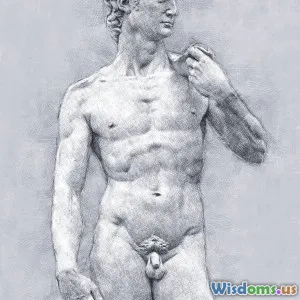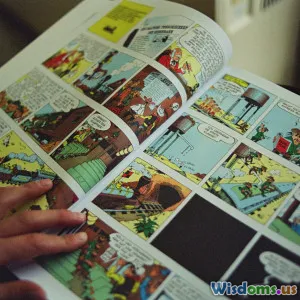
Failed Movie Revivals What Studios Get Wrong Most Often
12 min read Explore the critical reasons behind failed movie revivals and discover lessons studios often overlook, with real examples and insights from past blockbuster disasters. (0 Reviews)
Failed Movie Revivals: What Studios Get Wrong Most Often
Every year, major entertainment studios dust off beloved franchises and attempt to recapture lightning in a bottle—what could go wrong? Quite a lot, as bitterly demonstrated by many failed movie revivals. Audiences groan at trailers that promise a nostalgic return, only to deliver something flat, uninspired, or downright baffling. Studios continue making the same mistakes. Why? What are the traps turning nostalgic anticipation into disastrous disappointment? Let’s pull back the curtain on the most persistent and damaging errors in movie revivals and explore how Hollywood can truly bring its legends back to life.
Table of Contents
- Nostalgia: A Double-Edged Sword
- Misreading the Audience
- Cultural Shifts and Outdated Tropes
- Weak Scripts and the Legacy Curse
- Casting Choices and Chemistry
- Studio Interference vs. Creative Passion
- Lessons From Surprising Successes
- Conclusion: How Studios Can Do Better
Nostalgia: A Double-Edged Sword
Nostalgia is potent. According to a recent study cited by Psychology Today, revisiting past favorites provides audiences with a unique sense of comfort and belonging. However, as Dr. Angela Grace of the University of Southern California notes, "Nostalgia can just as easily create disappointment when expectations clash with reality."
Hollywood’s reliance on nostalgia-led cash grabs has led to a spate of failed revivals:
- "Ghostbusters" (2016): Touted as a progressive reboot, it drew harsh backlash both from old fans feeling alienated and new audiences unengaged. Its $229 million box office (against a $144 million budget) couldn't offset marketing costs, branding it a flop.
- "Independence Day: Resurgence" (2016): Laden with callbacks and sans original star Will Smith, the revival failed to evoke its predecessor's spirit, earning barely over its budget and scathing critical reviews.
The Nostalgia Trap
Studios bank heavily on the affection fans have for the original IP. But rather than honoring cherished aspects, revivals often reduce nostalgia to shallow cameos, repeated lines, or visual callbacks. This approach is like offering a photocopy of a cherished photograph; it’s recognizable but lacks the warmth and context of the original.
Expert Insight: Film historian Leonard Maltin notes, “Fan expectation reflects not just love for the original but a hope for new, meaningful resonance. When nostalgia is used cynically, it almost always backfires.”
Misreading the Audience
Contrary to popular belief, today's audiences aren’t merely seeking repetition—they want innovation that remains respectful to what made the original special. Studios, however, repeatedly miscalculate who they are making the movie for.
Case in Point: "Charlie’s Angels" (2019)
Intended as a modern feminist update, "Charlie’s Angels" neglected to remember what fans loved about past adaptations: the fun, campy tone and irreverent chemistry. Instead, the film emphasized overt messaging at the expense of story and character, leading to a global box office of $73 million against a budget of $55 million—disappointing for a blockbuster IP.
Fan Service Gone Wrong
“Fan service” often means little more than recycling catchphrases and referencing iconic moments. Yet, overindulgence alienates both legacy fans, who crave growth, and newcomers, who seek substance rather than inside jokes. A Variety post-mortem of the 2019 "Men in Black: International" stated bluntly: “It forgot to tell an original story, hoping sunglasses and neuralyzers were enough.”
Cultural Shifts and Outdated Tropes
One of the most overlooked revivals pitfall is the tendency to ignore significant societal changes. Jokes, behaviors, or character arcs celebrated in the original often feel awkward—or offensive—when simply transposed decades later.
"The Pink Panther" Series
The bumbling Inspector Clouseau—once beloved for slapstick insensitivity—is a far harder sell post-2000s, as revived entries with Steve Martin demonstrated. Despite a star’s comedic talents, humor reliant on outdated stereotypes underperformed critically and commercially (the 2009 sequel grossed $75 million on a $70 million budget).
Progress or Pandering?
Some revivals swing too far the other way, hyper-correcting in attempts to modernize. When “The Twilight Zone” returned in 2019, it faced criticism for prioritizing social messaging at the expense of storytelling, losing both the edge and cleverness of the original series.
- Quote: As veteran screenwriter Laeta Kalogridis put it, "Nobody wants the past exactly as it was. But they also don’t want a heavy-handed moral lesson thinly veiled as entertainment."
Weak Scripts and the Legacy Curse
Many revivals struggle to justify their existence, relying on brand recognition but lacking compelling narratives. It’s what’s known as the "Legacy Curse"—expectations rise, but ambition falls short.
"Terminator: Dark Fate" (2019)
After repeated reboots and timeline convolutions, “Dark Fate” boasted the return of James Cameron, Linda Hamilton, and Arnold Schwarzenegger—yet failed to reignite box office fortunes (earning $261 million, losing an estimated $120 million). Why? Critics cited a retread plot and uninspired new characters assumed to carry future films.
- Analysis: The most successful sequels expand the universe’s mythology (see "Mad Max: Fury Road," 2015), rather than treading water. Unfortunately, many scripts are committee-driven, composed of setpieces or callbacks rather than coherent character or story development.
Data Point
The New York Times reported that among 24 major Hollywood revivals from 2010-2020, average critic Rotten Tomatoes scores dropped by over 25 points compared to original versions. Lackluster writing was the top-cited problem.
Casting Choices and Chemistry
If iconic leads created much of a franchise’s appeal, poor casting dooms revivals from the start. This mistake extends beyond hiring or replacing individuals—failures often arise from chemistry that feels forced or actors ill-suited for the material.
"The Mummy" (2017)
Attempting to reboot classic Universal monsters (starring Tom Cruise no less), “The Mummy” aspired to launch a shared universe. Cruise’s action-hero persona clashed with horror-adventure roots, and chemistry between leads fell flat. This $195 million tentpole earned just $410 million globally, forcing Universal to abandon its “Dark Universe” plans entirely.
- Lesson: Audiences respond to authenticity; assembled star power isn't a shortcut for genuine, invested performances.
The Loss of Ensemble Magic
Many adored franchises (e.g., “Ocean’s Eleven,” “Ghostbusters,” “Star Wars” original trilogy) are powered by ensemble synergy. Replacing key players or misjudging dynamics (such as with “Sex and the City 2”) can undermine everything foundational to the series’ appeal.
Studio Interference vs. Creative Passion
Possibly the most damning mistake? When top-down executive decisions smother creative passion. Studio focus on ‘franchise management’—merchandising, universe-building—often conflicts with the personal, risk-taking vision required for compelling storytelling.
The "Fantastic Four" Debacles
Multiple “Fantastic Four” reboots—most notably the infamously troubled 2015 version—reveal the effect of overbearing studio mandates. Reports surfaced of script rewrites, extensive reshoots, and directorial loss of control, leading to a universally panned film (9% Rotten Tomatoes) that failed to start a cinematic universe.
Director-Driven Successes
Contrast this with director-driven revitalizations: George Miller’s visionary control over “Mad Max: Fury Road” poured raw creativity into a legacy property, elevating it to near-universal acclaim and ten Oscar nominations.
Lessons From Surprising Successes
Not all revivals fail. The difference? Studios that study source material with reverence and context, adapt stories to modern sensibilities, and empower passionate filmmakers often deliver triumphs that expand—rather than dilute—the brand.
Case Study: "Star Wars: The Force Awakens" (2015)
Its blend of returning heroes, new compelling leads, and fresh storylines (with careful echoes of 1977) earned $2 billion worldwide. J.J. Abrams collaborated closely with George Lucas’s mythos while updating tone, structure, and character diversity for a modern audience.
"Jumanji: Welcome to the Jungle" (2017)
Rather than retreading Robin Williams’s 1995 gem, the reboot dared to reinterpret the premise with a contemporary twist—friends trapped as avatars inside a videogame. The relatable coming-of-age themes and sharp humor resonated, leading to a global haul of $962 million.
- Success Pillars:
- Originality grounded in nostalgia
- Smart, audience-aware writing
- Genuine chemistry among cast
- Creative freedom minimizing corporate micromanagement
Conclusion: How Studios Can Do Better
We may never see the end of movie revivals, reboots, or sequels—but the pattern of repeated failure reveals important lessons for Hollywood:
- Honor Your Audience: Deeply understand what made the original live on in people’s hearts. Surface similarities are not enough—respectful originality is key.
- Adapt to Modern Sensibilities: Engage real-world changes and tell stories that resonate today, without becoming patronizing or losing the property’s soul.
- Focus on Story: No amount of nostalgia or star power can substitute for a great script, thoughtful characters, and emotional stakes.
- Empower Talent: Place trust in passionate creators—writers, directors, actors—and resist overbearing interference for the sake of synergy.
- Balance Tradition With Innovation: Appeal to both legacy fans and new generations by carefully blending the familiar with the fresh.
As franchises age, fans aren’t just craving the past—they yearn for meaningful, creative reinvention. If studios learn from prior failures and empower visionary teams, perhaps the next wave of revivals can make history, not repeat its mistakes.
Sources: Variety, The New York Times, Box Office Mojo, Rotten Tomatoes, Psychology Today, and industry interviews.
Rate the Post
User Reviews
Other posts in Reboots & Revivals
Popular Posts















